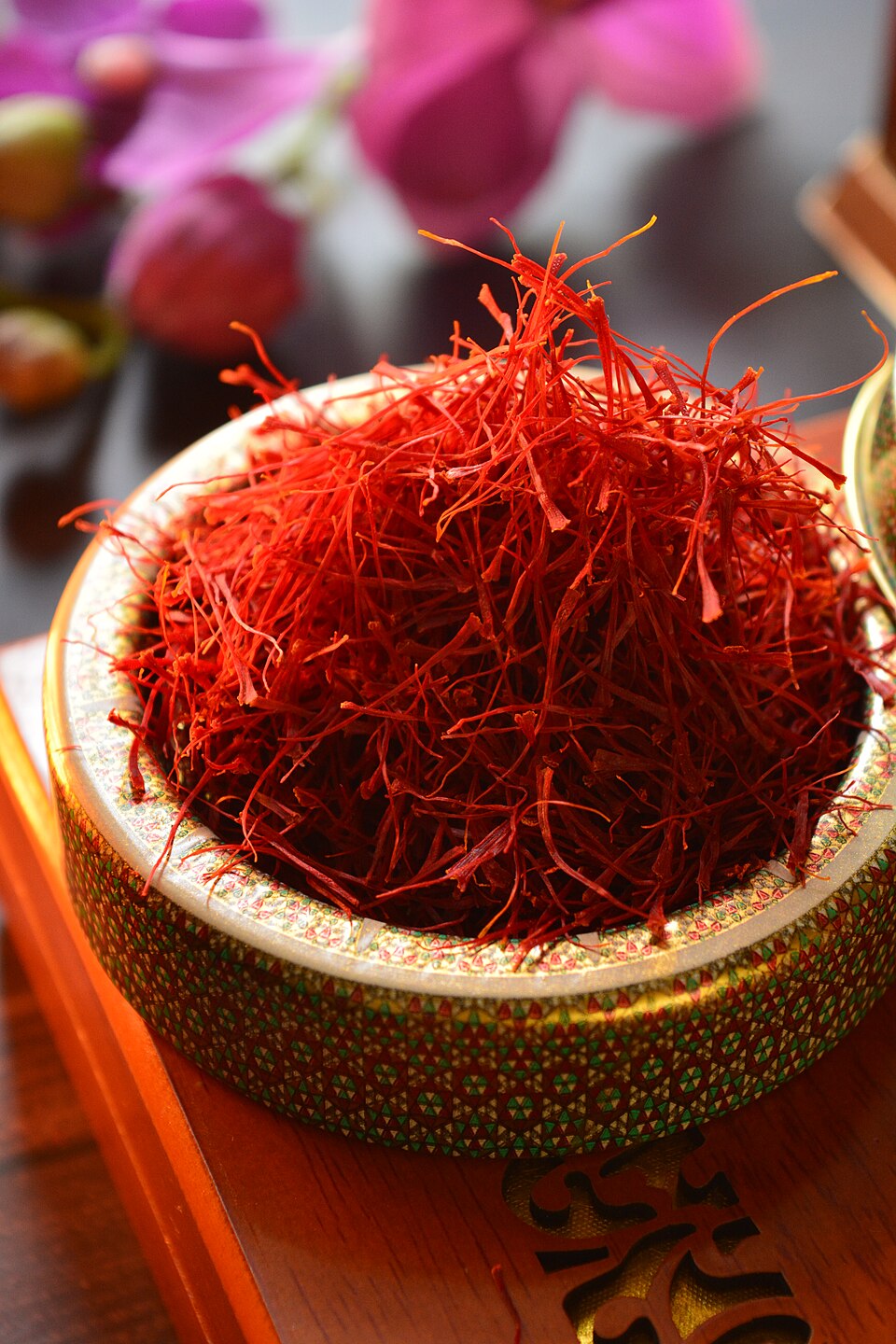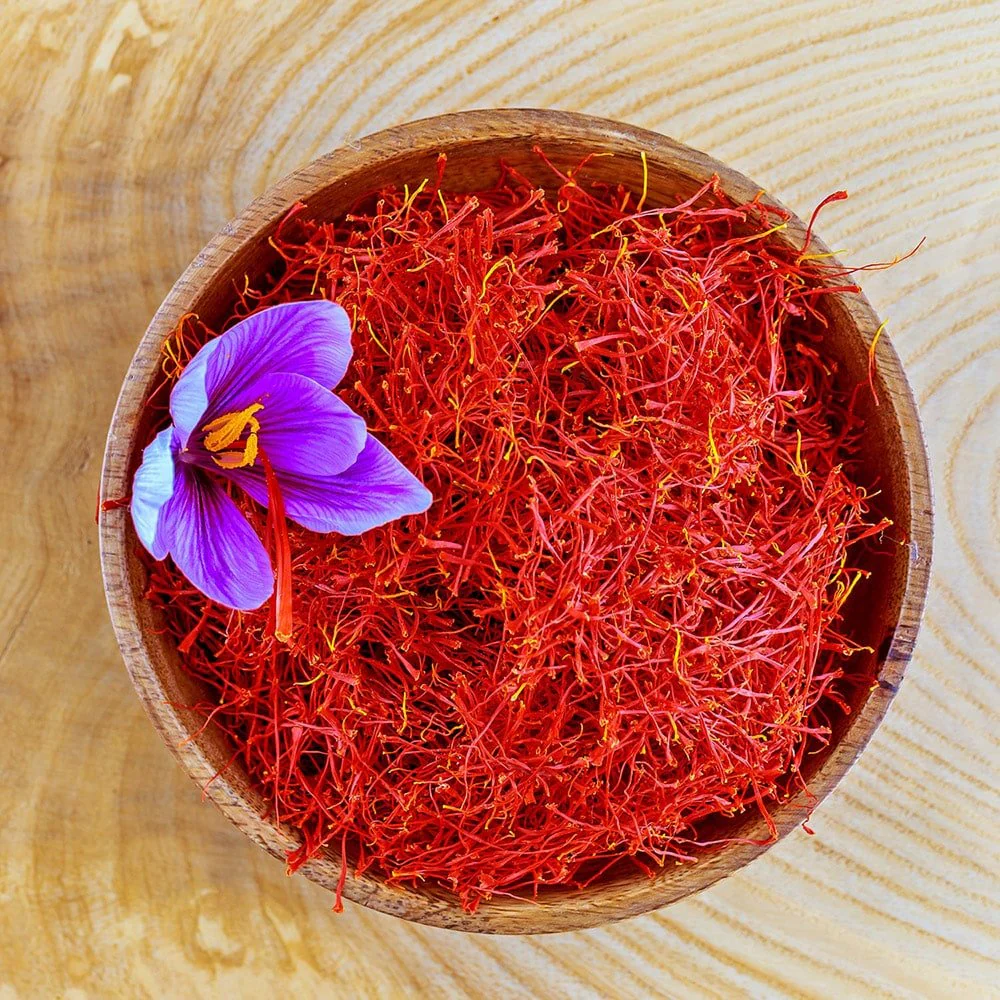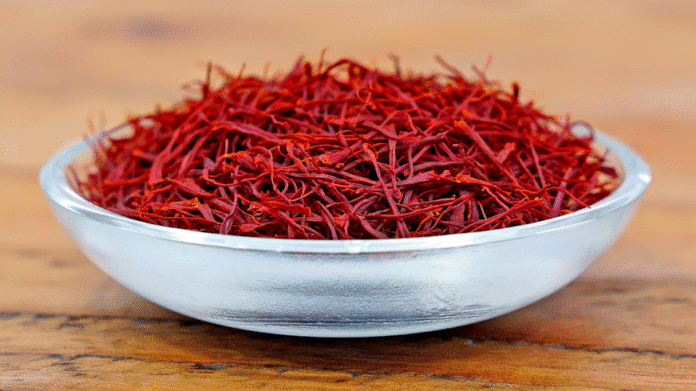INTRODUCTION:
Saffron is a highly valued spice obtained from the dried stigmas of the Crocus sativus flower, commonly known as the saffron crocus. It is renowned for its rich golden color, distinct aroma, and unique flavor, making it a prized ingredient in various cuisines around the world. Believed to have originated in Southwest Asia or Greece, saffron is now mainly cultivated in countries like Iran, India (especially Kashmir), Spain, and Morocco. The harvesting process is extremely labor-intensive, as each flower yields only three red stigmas, which must be carefully handpicked.

English: Saffron
Hindi: केसर (Kesar)
Sanskrit: कुंकुमम् (Kunkumam)
Urdu: زعفران (Za’faran)
Arabic: زَعْفَرَان (Za‘farān)
Persian (Farsi): زعفران (Za’faran)
Bengali: জাফরান (Jafran)
Tamil: குங்குமப்பூ (Kungumapoo)
Telugu: కుంకుమపువ్వు (Kunkumapuvvu)
Kannada: ಕುಂಕುಮ ಪುಷ್ಪ (Kunkuma Pushpa)
Malayalam: കുങ്കുമപ്പൂവ് (Kunkumappoov)
Punjabi: ਕੇਸਰ (Kesar)
HEALTH BENEFITS:

Antioxidant and anti-inflammatory properties:
Saffron contains antioxidants like crocin and crocetin that protect cells from damage caused by free radicals.
Mood and depression:
It may help improve symptoms of depression by increasing serotonin levels in the brain.
Alzheimer’s and memory:
Saffron may help improve memory and learning and is being studied for its potential benefits in conditions like Alzheimer’s and Parkinson’s disease.
Blood pressure:
Some studies show saffron can help lower blood pressure, particularly systolic blood pressure.
Heart health:
It has anti-atherosclerotic, antioxidant, and anti-inflammatory effects that can support cardiovascular health and help maintain healthy arteries.
Weight management:
Some research suggests saffron may help reduce snacking urges and promote weight loss.
PMS relief:
It may help reduce the physical symptoms of premenstrual syndrome (PMS).
Eye health:
Saffron extract has been studied for its ability to support vision and promote macular health.
Sexual function:
Early research indicates it may help with erectile dysfunction and male infertility.
Potential Anti-Cancer Effects:
Early research indicates that saffron’s compounds might inhibit the growth of cancer cells, though more studies are needed.
SIDE EFFECTS:

Poisoning:
Taking large amounts of saffron (5 grams or more) can lead to poisoning, with symptoms like vomiting, dizziness, and bloody diarrhea.
Yellowing of skin and eyes:
High doses can cause a yellowing of the skin, eyes, and mucous membranes.
Bleeding:
Very high doses may cause bleeding from the nose, lips, and eyelids.
Pregnancy:
Saffron in amounts larger than typically found in food is likely unsafe during pregnancy as it can cause uterine contractions and may lead to miscarriage.
Allergic reactions:
Allergic reactions are possible, although uncommon. If you experience symptoms like itching, swelling, or difficulty breathing, discontinue use and seek medical attention.
HOW TO USE:
In Cooking:
Soak a few saffron threads in warm water, milk, or broth for about 10–15 minutes to release its color and flavor.
Add the infused liquid or the threads directly to dishes like rice (e.g., biryani, paella), soups, stews, desserts (like custards and ice creams), and teas.

In Beverages:
Add saffron threads to warm milk or tea for a soothing, aromatic drink.
Saffron milk (often called “Kesar Doodh”) is popular for its taste and health benefits.
For Skincare:
Make a paste by mixing saffron threads with milk, honey, or yogurt and apply it as a face mask to brighten skin and reduce pigmentation.
You can also add a few threads to your regular moisturizer or cream.
In Traditional Medicine:
Saffron is often taken in small amounts (usually a few strands) to help with mood, digestion, or menstrual discomfort.
Always consult a healthcare professional before using saffron as a supplement.
As a Natural Dye:
Use saffron water to add a golden-yellow color to fabrics or natural cosmetics.
Important Tips:
Use saffron sparingly; a little goes a long way.
Avoid consuming excessive amounts, as high doses can be toxic.
Always buy pure saffron from a trusted source to avoid adulteration.




